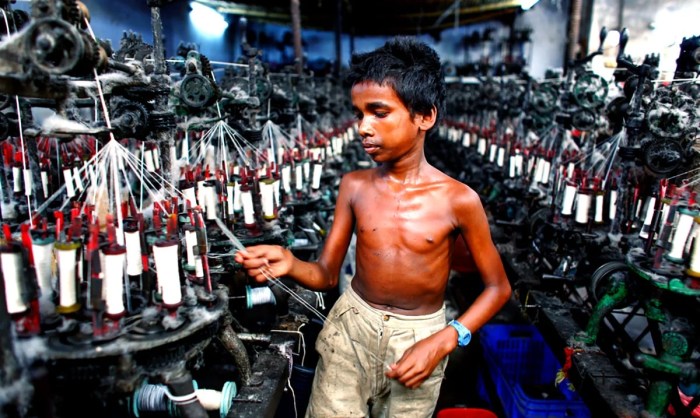Los niños trabajan tanto que los padres. correct incorrect delves into the complex relationship between child labor and its far-reaching effects on both children and parents. This issue, rooted in socio-economic factors, ethical dilemmas, and legal frameworks, demands critical examination and thoughtful intervention.
The consequences of child labor on children’s physical, emotional, and educational well-being are undeniable. It perpetuates a cycle of poverty and undermines their fundamental rights to education and development. Simultaneously, parents grapple with the difficult decision of allowing their children to work, often driven by economic necessity or cultural norms.
Children’s Workload and Parental Impact
Child labor remains a prevalent issue worldwide, with millions of children engaged in various forms of work that can have detrimental consequences for their well-being. This article explores the extent of child labor, its negative effects on children, and the economic and social factors that contribute to its persistence.
According to the International Labour Organization (ILO), an estimated 152 million children aged 5 to 17 are involved in child labor, with the majority working in agriculture, mining, and manufacturing. Child labor deprives children of their childhood, limits their access to education, and exposes them to hazardous and exploitative working conditions.
Negative Consequences of Child Labor, Los niños trabajan tanto que los padres. correct incorrect
- Physical and psychological harm, including injuries, accidents, and long-term health problems
- Emotional distress, such as anxiety, depression, and low self-esteem
- Cognitive impairment, stunted growth, and reduced educational attainment
- Increased risk of poverty and social exclusion in adulthood
Economic and Social Factors Contributing to Child Labor
Child labor is often driven by economic necessity and poverty. In many developing countries, families rely on children’s income to supplement their meager earnings. Other factors include lack of access to education, limited employment opportunities for adults, and cultural norms that encourage child labor.
Parental Perspectives on Child Labor

Parents’ attitudes and decisions regarding child labor are influenced by a complex interplay of factors. In some cases, parents may allow or encourage their children to work due to economic hardship or cultural beliefs that value children’s contributions to the family.
Ethical considerations arise when parents make decisions that prioritize economic gain over their children’s well-being. Cultural norms and societal expectations can also shape parental attitudes towards child labor, with some cultures viewing it as a necessary rite of passage or a means of teaching children responsibility.
Legal and Policy Framework

International and national laws and regulations aim to protect children from child labor. The ILO’s Minimum Age Convention, ratified by 187 countries, sets a minimum age for employment and prohibits the worst forms of child labor.
However, enforcement of child labor laws remains a challenge in many countries. Lack of resources, weak legal frameworks, and cultural resistance contribute to the persistence of child labor.
Strategies for Combating Child Labor

Addressing child labor requires a multi-pronged approach that includes education, economic empowerment, and social protection. Successful interventions include:
- Providing free and accessible education for children
- Empowering families economically through microfinance and job creation programs
- Enforcing child labor laws and providing support for child laborers and their families
- Promoting international cooperation and collaboration to address global supply chains that contribute to child labor
Health and Safety Concerns

Child laborers face specific health and safety risks due to their immature physical and mental development. They are more vulnerable to accidents, injuries, and occupational diseases. Long-term health consequences of child labor include musculoskeletal disorders, respiratory problems, and cognitive impairment.
Protecting child laborers from hazardous work environments requires strict enforcement of child labor laws, provision of protective equipment, and education on workplace safety.
Economic and Social Impacts
Child labor has negative economic and social consequences. It perpetuates poverty, undermines educational attainment, and reduces productivity in the long run.
Eliminating child labor has the potential to improve the well-being of children and families, reduce poverty, and promote economic growth.
FAQ Insights: Los Niños Trabajan Tanto Que Los Padres. Correct Incorrect
What are the main causes of child labor?
Poverty, lack of access to education, and cultural norms that condone child labor are major contributing factors.
What are the negative consequences of child labor on children?
Physical, emotional, and educational harm, including stunted growth, psychological trauma, and limited opportunities for future development.
What can be done to address child labor?
Strengthening legal frameworks, investing in education, providing economic support to families, and raising awareness about the issue.